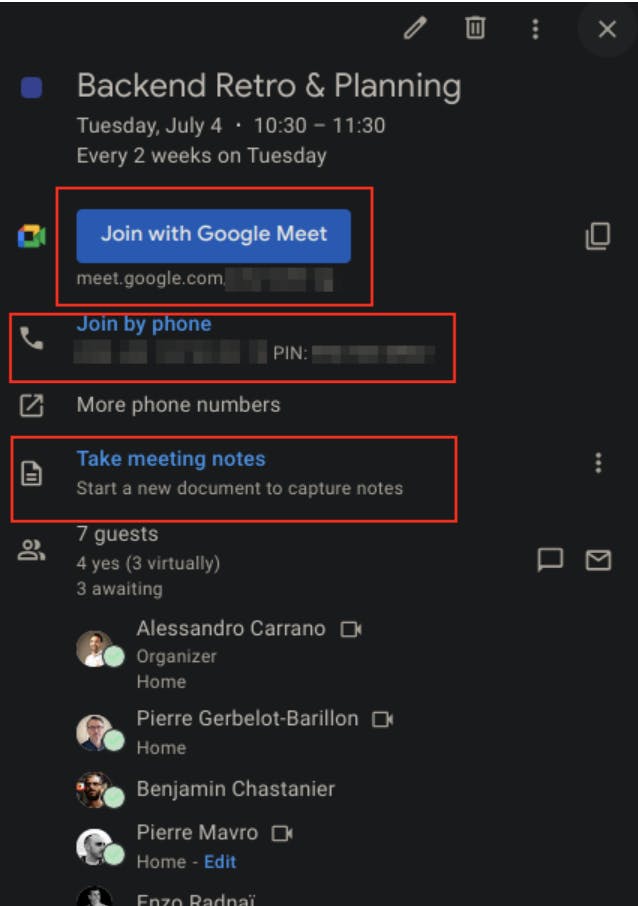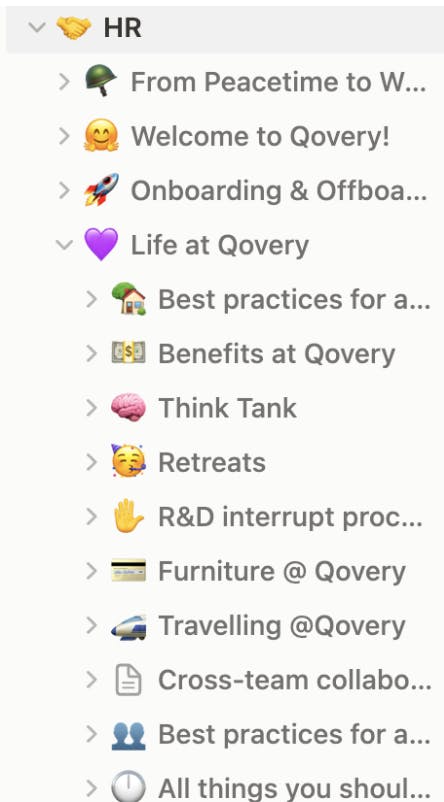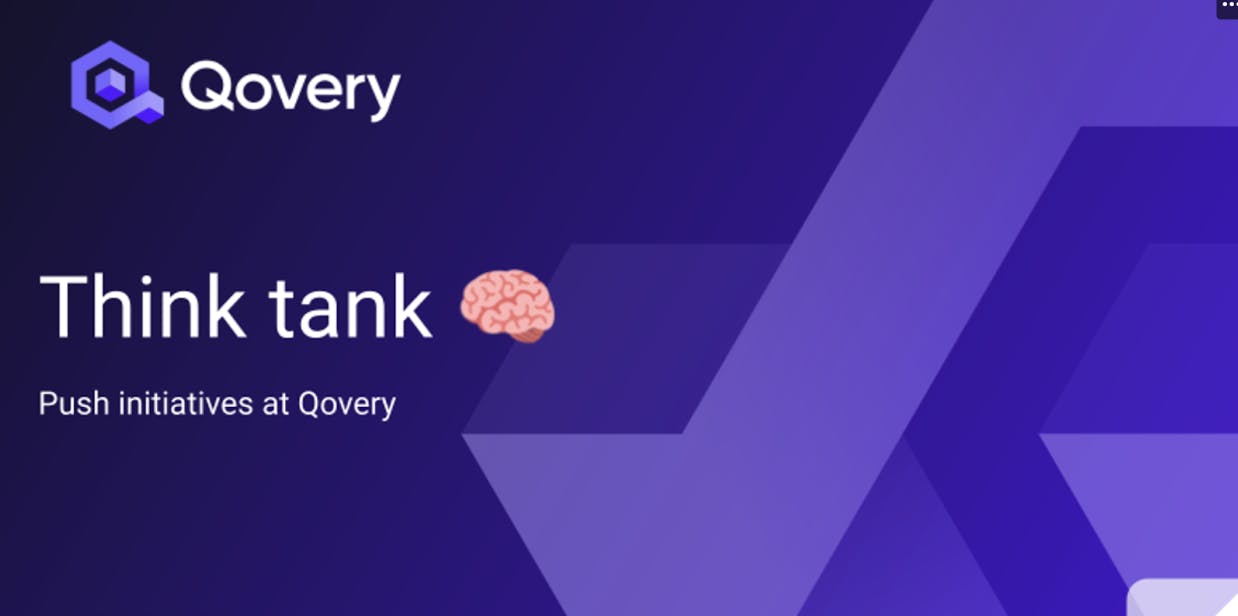Embracing Asynchronous Communication at Qovery
In today’s face-paced and interconnected business environment, effective communication is at the heart of a successful organisation.
After the pandemic and as companies expand across timezones, rely on remote teams that enhance diversity, and seek to increase productivity, our traditional approach of synchronous communication can become a struggle. In this article, I’d like to talk about the benefits and challenges of asynchronous communication and some tips we have experienced at Qovery (Even if there are many things that we would like to put in place still!).

Marie Mallassi
July 17, 2023 · 6 min read
First, let’s be on the same page on what “asynchronous communication” means.
Asynchronous communication happens when people in the same organisation are not available simultaneously. As a full-remote company, our team can’t meet in our office every week; most communications are then asynchronous.
- It intends to increase productivity: async communication empowers our team members to focus on their tasks without constant interruptions. We observed it enables them to manage their time better by responding to messages and requests when it suits them best. By eliminating the pressure to be constantly available, team members can devote more time to deep work, increasing productivity and higher-quality outputs.
- Enhance team collaboration & diversity: Async communication bridges the gap between different time zones and geographical locations in a distributed workforce. Our team members can contribute their thoughts, ideas, and feedback without needing real-time availability. This fosters collaboration among diverse teams and allows for a richer exchange of perspectives, leading to more innovation. It also allows for widening the recruitment perspectives and opportunities.
- Documentation and knowledge sharing: When you are Qovery-like, meaning in a full-remote environment without an office, you must document everything. By eliminating coffee-machine discussions, async communication creates a valuable repository of information. Conversations, decisions, and solutions are documented and easily accessible for future reference. This promotes knowledge sharing, enables new team members to ramp up quickly, and prevents information silos.
- Better work-life balance: Async communication supports work-life balance by providing flexibility in when and where work is accomplished. Thus, at Qovery, we have implemented a “flexible hours” policy: our team members can structure their work schedules to align with personal obligations (Running, receiving their new fridge, picking up their kids, and medical appointments…), reducing stress and increasing job satisfaction. This flexibility contributes to a healthier and more engaged workforce, leading to a good retention rate.
At Qovery, we have identified these following main challenges to pay attention to:
- Miscommunication and lack of clarity: async communication relies heavily on written messages, which can sometimes be open to interpretation or lack the nuance of face-to-face conversations. It is so easy to misinterpret and be stressed by a message read as aggressive or too formal! At Qovery, we think it is essential to establish clear communication guidelines and expectations, including appropriate tools, formats, and response times. For instance, imagine that you receive several messages at 9 am, at the same time, and that you have to jump into a meeting in a meeting in 2 minutes. You try to answer all, but probably, you’ll forget to say “hello” or “thank you”. It is pretty anecdotic, but it seems cold and dry for the person who receives your message.
- Delayed decision-Making: Async communication, by design, can slow down the decision-making process. Waiting for responses and gathering inputs from multiple stakeholders take longer than a real-time discussion. You can easily even miss some topics.
- The feeling of isolation: Systematic async communication could be a pain for cohesion and engagement.
Here are some tips we have experienced at Qovery; hoping it is helpful:
Choose the right tools: The appropriate communication tools are essential for effective asynchronous collaboration. Some standard tools are email, project management platforms, instant messaging apps, and collaborative document editors. Defining the organisation’s needs before implementing one is a crucial step.
As we’d like to have smooth async communication at Qovery, we have defined a clear policy to use Slack to avoid misinterpretation and keep clarity. Here are some concrete examples:
- Don’t forget to say “hello”, “please”, and “thank you”: small words, big effect ;)
- Don’t hesitate to add an emoji to make sure your emotion is understood correctly
- If you need focus time, you can add ⛔ to your status - it is better than answering too quickly
- We propose to add this emoji 🍦when we are away from our keyboard instead of sending a message to inform you that we are not immediately available. It is consistent with our “flexible hours” policy: we trust our team members and don’t want them to ask for formal authorisation to be out of the office for 1 or 2 hours.
- We preferentially use threads to avoid too much noise and keep the context.
- We use @here or @channel with caution.
At Qovery, we have chosen to use Google Suite and then Google Meet with an automated Video conference link in the invite and Notion as we’re using Google Workspace, all our tools are remote-ready and plugged on to simplify it for everybody.

- Set clear expectations: Establishing guidelines and expectations for async communication is a pillar. At Qovery, we aim at defining response times, preferred communication channels for different topics, and frameworks for urgent matters.
At Qovery, We do a written stand-up on a dedicated channel every morning. This way, everyone is informed about what we did yesterday, what we will do today, and the potential blocking points we face. We are also precise if we have a period of unavailability during the day.

- Foster a culture of transparency and documentation: Encourage team members to document their discussions, decisions, and action items in a centralised location. At Qovery, transparency is critical. It is not only a vain word; it is a value.
Business results are regularly shared globally during a all-hands. Also, we prefer public Slack channels to 1:1 discussions on Slack. This way, the info is accessible to everyone. Again, everything is documented with tons of Notion pages. One day, I will share how I have structured the info on the HR space 😉🤐

- Encourage people to raise their hand: When it comes to a fully remote company, it is essential to build a sense of connection, a strong team cohesion, even thanks to virtual interactions. At Qovery, we are people first, and the well-being of our team members is something we take care of.
Examples of initiatives to build team cohesion: - Coffee Slack Channel

- A ThinkTank initiative is implemented to avoid feeling isolated working remotely,

In a few words (another article to come?), a Think Tank is a group of motivated people who would like to push initiatives and help others drive initiatives that make Qovery a better place to work.
The idea is to collaborate to make emerging initiatives to ease how we work or solve issues on any topic. It aims to empower each person and push the “bottom-up” feedback. It is open in the company, and it is optional.
Mastering the art of effective async communication is something precious in our modern workplaces. As we do at Qovery, we think we optimise productivity, collaboration and understanding by choosing the right tools and setting clear expectations and policies. Remember to encourage feedback and maintain transparency; you will probably observe successful achievements in an asynchronous mode.
In a nutshell, here is what to keep in mind when sending an asynchronous message:
1 - You should define clearly your need and be crystal clear on what you expect by having this communication
2 - Be concise, synthetic but in the meantime, provide all the elements that are necessary to avoid too many messages on the same thread
3- Resources, documentation, links, …all that could be useful to help the receiver answer properly
4 - Of course, be precise with your agenda! A deadline is essential to help the recipient evaluate the urgency of your request.
Then, let’s send it!
You can learn more about Qovery by reading our blog and our roadmap.
Your Favorite DevOps Automation Platform
Qovery is a DevOps Automation Platform Helping 200+ Organizations To Ship Faster and Eliminate DevOps Hiring Needs
Try it out now!

Your Favorite DevOps Automation Platform
Qovery is a DevOps Automation Platform Helping 200+ Organizations To Ship Faster and Eliminate DevOps Hiring Needs
Try it out now!